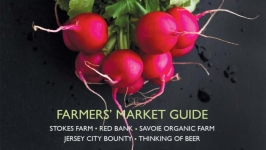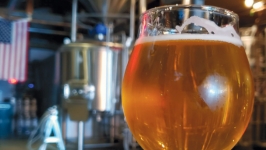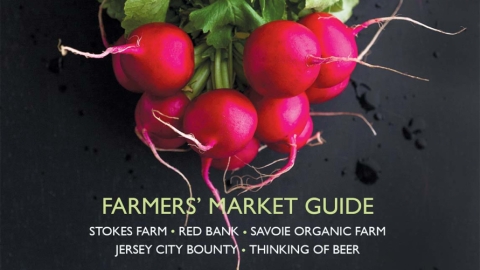The Case for More New Jersey Breweries
On my 21st birthday I walked into the Gaslight Brewery and Restaurant in South Orange and ordered a beer that went by three letters: IPA. To beer drinkers back then, the IPA was a badge of honor, proof that you could handle the strong, the bitter, the opposite of the American light lager that had permeated the land.
I was too young and too inexperienced to know just what I was drinking or why it mattered, but something spoke to me about the romance of beer and the importance of supporting a small brewery in my hometown. This was two years after NJ Transit brought the Midtown Direct service from the Essex County suburbs to Manhattan, and South Orange was beginning to boom again because of it. A brewery in the heart of the village, with its copper-clad brewhouse shining in the front window, marked the return of this once common profession to its local roots.
Before prohibition, there were more than 4,000 breweries in the country, and they were all local. Beer rarely traveled beyond the borders of the city or town where it was made. In New Jersey in the early 1900s, brewing was the 11th largest industry in the state. By the time we hit the 1970s, we were down to one operating brewery.
When I started covering the beer industry as a reporter in 2003, there were only 700 “microbreweries” in the country and a handful, mostly brewpubs (which also serve food), in the state. Today, there are more than 7,100 breweries in the country, but only around 100 in New Jersey.
Given our population and strong sense of local pride, that low number is surprising. The breweries that have opened have done so against great odds—outdated state laws, bullying lobbyist groups, high rents, higher taxes and competition from international brewing companies, one of which owns a brewery just across from Newark Airport.
Still, there’s no denying the economic impact a local brewery can deliver. I’ve seen it firsthand, time and again. A brewery moves into a less-developed part of town because rent is affordable, and visitors quickly start showing up for tours. Restaurants open in the neighborhood, and, over time, residential units spring up and shops open. An area is revitalized, thanks to beer.
 PHOTOGRAPH: COURTESY OF THE AUTHOR
PHOTOGRAPH: COURTESY OF THE AUTHOR
I’m fortunate that my job allows me to visit breweries all over the country, and what I’ve found is that if you want to get a sense of a community and see the true diversity this country proudly has, you should visit a brewery.
You can witness this revitalization in parts of Colorado, California, Vermont, Massachusetts and virtually any other state. Some politicians in our state know this and are working to bring breweries to their own towns. I know because they’ve reached out and asked me if I knew anyone looking to open a tap room. A 2017 study by the Brewers Association says that brewing employs nearly 11,000 people in the state, with an economic impact of $1,689,145,000. Still, there’s room to grow.
Beer is the great leveler. It doesn’t know gender, politics, race or religion. Patrons come from all different backgrounds for one common goal: a local pint. I’m fortunate that my job allows me to visit breweries all over the country, and what I’ve found is that if you want to get a sense of a community and see the true diversity this country proudly has, you should visit a brewery.
Local breweries are not cavernous factories filled with stainless steel and hoses. Many are cozy spots that feel like chic restaurants or comfortable living rooms. An industrial space doesn’t have to feel cold. Indeed, breweries are taking pages out of winery playbooks and creating spaces where we, the drinkers, can easily spend an afternoon hanging out with friends. Kids are playing, music is playing, first dates are happening.
Throughout the state, breweries are not afraid to forge their own paths. Carton in Atlantic Highlands regularly turns out culinary-forward beers brewed with ingredients like pickled cherries, coffee and white truffles. Cypress Brewing in Edison makes some of the finest stouts this state has produced. Bolero Snort Brewing in Bergen County is constantly making entertaining beers (with bovine pun–forward names), including breakfast cereal, chicken parm sandwiches and more. Referend Bier Blendery in Pennington is making some of the country’s finest spontaneously fermented ales.
If you want IPAs (and many do—it’s the bestselling craft beer category in America), we have brewers that excel on over-hopped beers. The same is true with lager beers, saisons and fruited ales.
We’re at a point in beer culture where customers will find what they like, no matter what, and seek out the places that make it. Customers are learning that when a beer tastes like fake butter (like what you get on movie theater popcorn), it’s thanks to diacetyl, something that doesn’t belong in most beers. Customers are welcoming spices, which are no longer foreign. We’ve moved away from bland light lagers and into a world of taste and experimentation.
Yet, the market can handle more. Newark doesn’t have a small brewery, despite brewing once being a top industry in the city. Main streets in downtown Newark and all over the state are looking for a comeback, and a brewery as a tenant can help (I’m looking at you, Wet Ticket in Rahway).
For us, the drinkers, there’s a sense of pride that comes from ordering a local pint. Knowing our dollars are going toward our community and our neighbors. Watching the brewing process happen before our eyes. Meeting the artisans who created the recipe.
Gaslight Brewery is still a mainstay on South Orange Avenue. It’s joined the fabric of long-time businesses and outlived so many others that have come and gone. Pints are poured and passed over the bar daily, introducing many to the science of water, grain, hops and yeast.
A local brewery is a return to our traditions in this country, and it also helps to create new ones.











